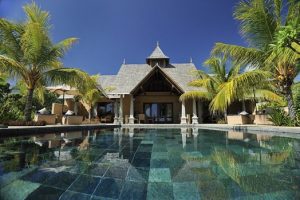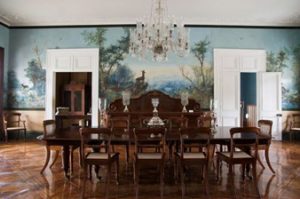
9 REASONS TO LOVE MAURITIUS
9 REASONS TO LOVE MAURITIUS


Mauritius is an exclusive Island, says Ashwin Cahoolessur, an officer at the Mauritius Tourism Promotion Authority. There are no low-cost flights, and half of the island’s 101 hotels have five stars. Unlike other islands in the Indian Ocean, Mauritius isn’t focused on private island resorts—guests are actively encouraged to leave their hotels, explore the island, understand the culture and have adventures. “It’s not just beach, water and food,” Ashwin Cahoolessur says. There are also plans to launch a digital nomad visa soon. Now everyone has new reasons to visit Mauritius.
![]() Beaches
Beaches
This one goes without saying, Mauritius is surrounded with white, sandy beaches and vivid turquoise waters. The bays are generally calm, and good for swimming and gentle water sports like snorkeling. The water is clear and warm in the summertime.
![]() Maradiva Villa Resort & Spa
Maradiva Villa Resort & Spa
65 colonial-style villas spread over 27 tropical acres, include nearly half a mile of pristine beach. Maradiva is one of those resorts that can be at nearly full occupancy but never feel crowded. Each villa has a private pool and large shaded terrace with outdoor living and dining areas, and the guests—10% of whom are here on their honeymoon—who dine outside their villas on the property spread themselves out among the all-day Coast2Coast, the modern Indian Cilantro and the Japanese show-cooking counter Teppan.

![]() Blue Penny Hotel
Blue Penny Hotel
In the Caudan Waterfront mall in the island’s biggest city, Port Louis (population 300,000). The Blue Penny Museum is compact and thoughtful, focusing on the historical and cultural wealth of Mauritius i.e., Maritime expeditions, 18th- and 19th-century history told primarily with coins and stamps etc.

![]() Ayurvedic wellness
Ayurvedic wellness
Maradiva’s spa is just one example of the positive Indian influences in Mauritius. It’s authentically Ayurvedic (the traditional Hindu system of medicine), and everyone gets a consultation from the Ayurvedic doctor, who previously worked at Ananda in the Himalayas, followed by recommendations of treatments and diet during guests’ stays.
![]() Château de Labourdonnais
Château de Labourdonnais
Built in 1856, this lavished home was inhabited by a Mauritian family for more than 150 years. After a 2006 renovation that restored it to its former glory—with its teak and mahogany furnishings from France and England and Baccarat crystal chandelier, it became an important attraction, an immersion in the 19th-century art of living in Mauritius.

![]() Fish Curry
Fish Curry
Mauritian curries are lighter and less spicy than those in other parts of the world, which makes them quite easy to eat. The recipe is simple—just fish, onions, garlic, cilantro, chilies and a reasonable dose of coconut milk.

![]() Heart of Palm Salad
Heart of Palm Salad
It’s hard to imagine the thought process of the first person to cut down a palm tree and ate the soft centre of the trunk, but someone did it and discovered that it was tasty and made them feel good while also having a lot of nutritional value. It’s sustainably cultivated around the island on former sugar plantations. New trees grow quickly, and they cut only enough for local consumption and then served everywhere as a light, zesty starter, sliced thinly and dressed with lemon and olive oil.

![]() Le Domaine de Saint Aubin
Le Domaine de Saint Aubin
Saint Aubin is much more than just a wooden colonial house ,it dates from 1872. There’s still rum production and a “house of rum” that can be visited (and tasted), a good restaurant, a vanilla production component, beehives, gardens, and a miniature farm where kids can watch and feed tortoises, and other animals. A small Creole house on the property can be rented as a three-bedroom villa with a swimming pool and bicycles included.
![]() Chamarel rum distillery
Chamarel rum distillery
It’s a big tourist operation, but the distillery’s museum portion does a good job of telling the story of rum production on the island and the restaurant serves a particularly good heart of palm salad. The simple, aged rums are quite tasty too.


Content per Forbes.com




